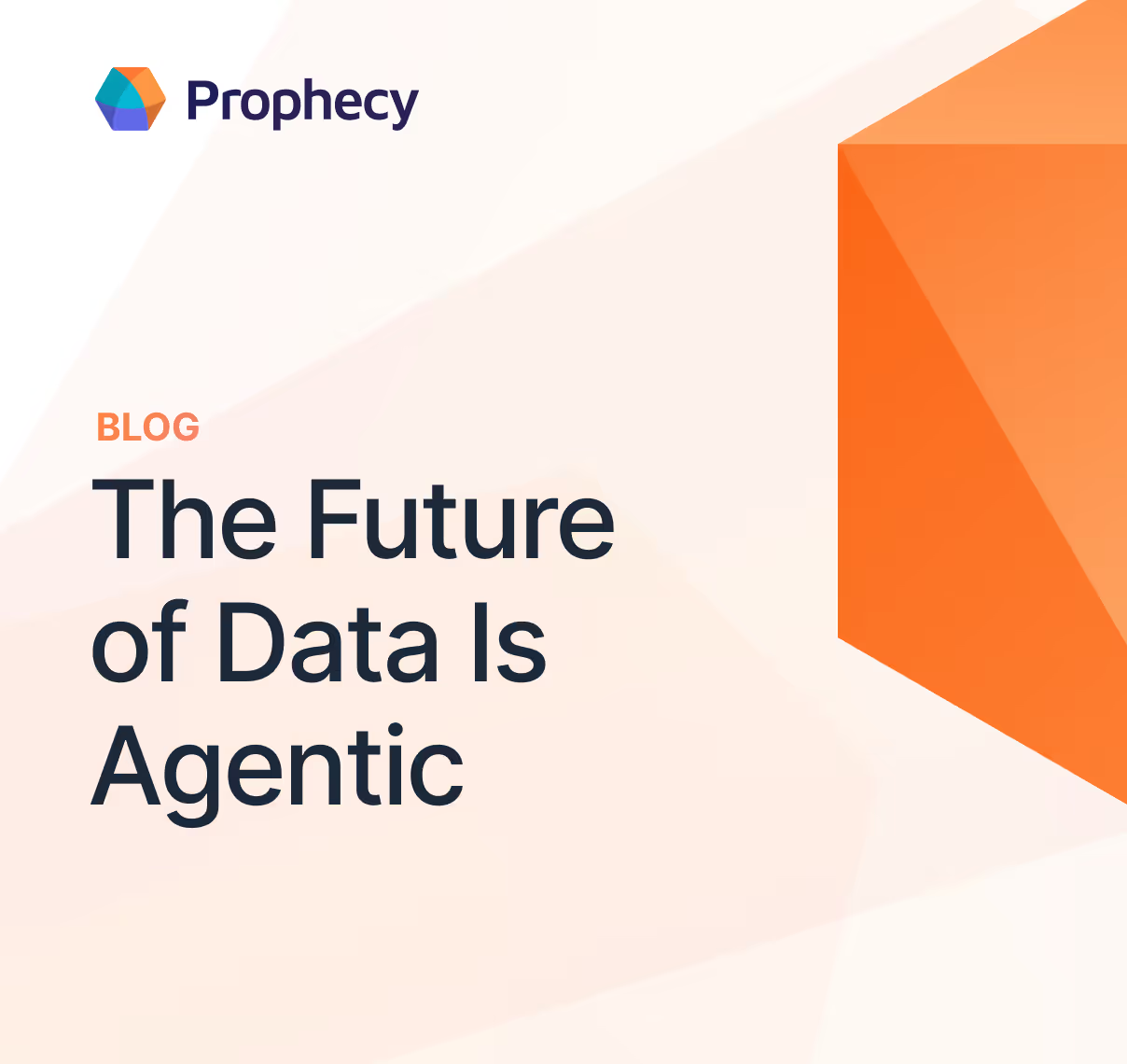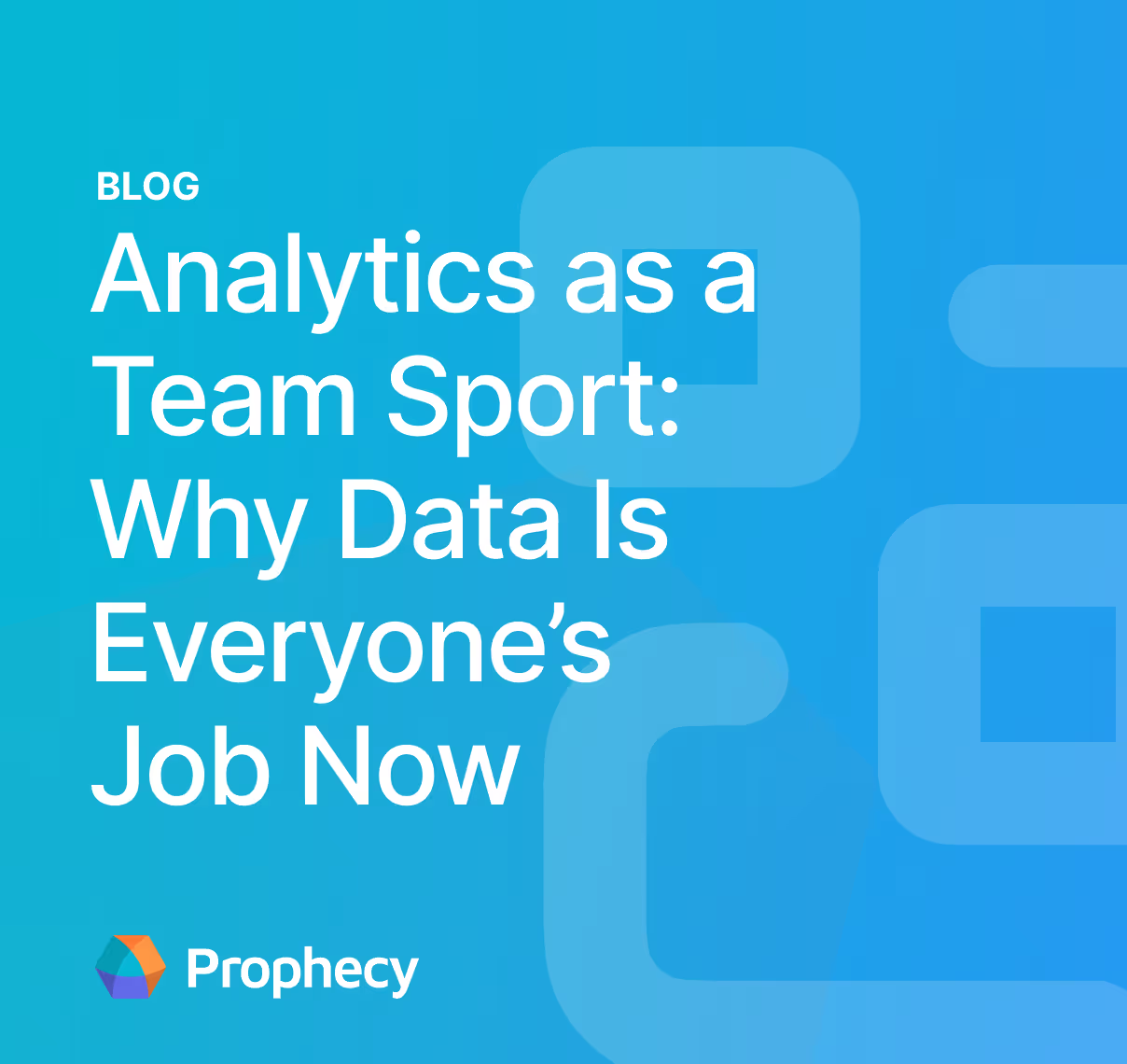Stop Cloud Data Cost Chaos With These 11 Executive Strategies
Cloud data costs spiraling out of control? Learn 11 executive strategies to optimize spending.
Cloud data platforms promise unlimited scale and performance, but they often deliver seemingly unlimited bills alongside those capabilities. Organizations migrating to platforms like Databricks often find that their monthly cloud costs have doubled or tripled compared to on-premises infrastructure costs, despite initial promises of cost efficiency.
The problem lies in the fundamental shift from fixed capital expenditures to variable operational expenses, which can spiral out of control without proper governance. When data teams suddenly have access to virtually unlimited compute and storage resources, traditional budgeting approaches break down completely.
Self-service data preparation compounds this challenge. While democratizing analytics reduces engineering bottlenecks, it creates new complexities in cost management. Business users who lack visibility into cloud pricing models can inadvertently trigger expensive workloads that consume thousands of dollars in compute hours.
Smart organizations are implementing executive-level frameworks that balance innovation with fiscal responsibility. These 11 proven strategies help you maintain the agility and performance benefits of cloud data platforms while keeping costs predictable and aligned with business value.
Strategy #1: Implement usage-based chargeback models across business units
Traditional IT budgeting treats data infrastructure as a shared cost center, obscuring the true financial impact of different teams' usage patterns. This opacity prevents informed decision-making and removes accountability from the actual consumers of cloud resources.
Build chargeback systems that allocate cloud costs directly to the business units and projects that generate them. Modern cloud platforms provide detailed usage analytics that enable precise cost attribution down to individual workloads, users, and even specific queries or transformations.
Start by identifying your highest-value use cases and their associated costs. Financial reporting dashboards that run daily might consume relatively little compute, while machine learning model training could represent 60% of your monthly bill despite serving a smaller user base.
When marketing teams can see that their customer segmentation analysis costs $2,000 per month, while their attribution modeling costs $8,000, they make more informed decisions about which initiatives deserve continued investment.
Create monthly cost reports for department heads that display both absolute spending and cost-per-insight metrics, naturally driving accountability.
Strategy #2: Deploy automated spending alerts and emergency circuit breakers
Cloud costs can escalate dramatically within hours, especially when poorly optimized queries or runaway processes consume massive amounts of compute resources. Traditional monthly budget reviews do not protect against these sudden spikes that can destroy quarterly budgets overnight.
Set up real-time spending alerts at multiple threshold levels—warning alerts at 75% of the monthly budget, critical alerts at 90%, and automatic circuit breakers at 110%. These progressive notifications give teams opportunities to investigate and respond before costs become catastrophic.
Most organizations discover that a single poorly written join operation can consume their entire monthly compute budget within hours. Implement query-level cost controls that automatically terminate operations exceeding predefined resource limits, regardless of who initiated them.
During cost emergencies, every minute of delay translates directly to additional financial impact. Create emergency response procedures with designated individuals who have the authority to pause non-critical workloads and 24/7 access to administrative controls.
Strategy #3: Optimize compute resource scheduling and auto-scaling policies
Cloud data platforms default to generous resource allocation, prioritizing performance over cost efficiency. Organizations that accept these defaults often pay for significantly more compute capacity than their workloads actually require, especially during off-peak hours.
Heavy usage during business hours, moderate activity during evening ETL windows, and minimal demand overnight create predictable patterns in most organizations. Analyze your actual usage data to configure auto-scaling policies that match resource allocation to these patterns rather than maintaining peak capacity continuously.
Interactive dashboards require fast response times and benefit from dedicated compute resources, while batch processing jobs can tolerate longer startup times in exchange for lower costs.
Understanding the differences between batch and stream processing can help in designing workload-aware scaling policies that consider both timing and specific performance requirements of each application type.
Many organizations discover they're running clusters sized for worst-case scenarios that occur less than 5% of the time. Right-size your baseline configurations based on actual usage analytics, then implement smaller clusters with burst capacity for peak periods to achieve cost savings of 40-60%.
Strategy #4: Establish intelligent data retention policies that reduce storage costs
Data storage costs appear modest compared to compute expenses and are certainly much more manageable with advancements in technology, but they can still accumulate rapidly when organizations default to retaining data indefinitely. Raw data, intermediate processing outputs, and historical backups can consume petabytes of storage, generating substantial monthly charges without corresponding business value.
Frequently accessed data should be stored in high-performance storage, while historical information can be migrated to archive tiers that cost 80-90% less but require longer access times. Implement tiered storage strategies that automatically move aging data to progressively cheaper storage classes based on access patterns.
Customer transaction data may justify long-term retention for regulatory compliance, while debug logs and temporary processing files typically require preservation for only 30 days. Collaborate with business stakeholders to establish value-based retention criteria rather than defaulting to permanent storage for everything.
Failed job outputs, duplicate datasets, and abandoned experimental results often consume significant storage despite providing zero business value. Deploy automated cleanup processes that remove this waste without manual intervention, and emphasize data quality monitoring to prevent accumulation over time.
Strategy #5: Eliminate redundant data processing jobs and duplicate workloads
Different teams working independently often develop multiple solutions for similar analytical needs. These redundant processing jobs unnecessarily multiply compute costs while creating maintenance overhead and potential inconsistencies across the organization.
Customer segmentation analysis, revenue reporting, and inventory tracking are frequently utilized across various departments in multiple variations. Conduct regular audits of your data processing landscape to identify these overlapping workloads, and focus on optimizing data pipelines, which can reduce compute costs by 30-50% when consolidated.
Rather than allowing each group to build independent pipelines, focus on building data products for innovation, creating shared data assets that multiple teams can consume. When marketing, sales, and finance teams all require customer metrics, build a single authoritative customer data mart instead of maintaining three separate processing workflows.
Before optimizing or consolidating workloads, understand which downstream reports and applications depend on current outputs. Implement dependency tracking that reveals upstream impacts of processing changes to prevent consolidation efforts from accidentally breaking critical business processes.
Strategy #6: Implement cost-aware data pipeline design patterns
Traditional data engineering focuses primarily on functional requirements and performance, often overlooking cost implications during design phases. Small architectural decisions can create substantial ongoing cost differences when multiplied across hundreds of pipelines and thousands of executions.
Instead of reprocessing entire datasets daily, implement change data capture mechanisms that identify and process only modified records. This incremental processing approach can reduce compute costs by 70-80% for large datasets with relatively small daily changes.
For example, converting from JSON to Parquet format typically reduces storage requirements by 60-75% while accelerating query performance. Optimize data formats and compression strategies to reduce both storage and processing costs—these improvements compound over time as data volumes grow.
When engineers can see that their proposed join strategy will cost $500 daily versus $50 for an alternative approach, they make more cost-conscious choices without requiring external oversight. Create cost estimation tools that help developers understand the financial impact of design decisions during development phases.
Strategy #7: Deploy self-service analytics with built-in cost controls
Self-service data preparation can dramatically reduce engineering bottlenecks and accelerate time-to-insight, but it creates cost management nightmares without proper governance. Business users who lack visibility into cloud pricing models may inadvertently trigger expensive operations that consume substantial resources.
Rather than providing unlimited access to compute resources, create curated environments where users can explore data and build analyses within predefined resource limits. Modern self-service environments, such as Prophecy, provide business users with analytical capabilities while maintaining essential cost guardrails.
When business analysts can see that their proposed data exploration will cost $200 compared to $20 for a more targeted approach, they make more informed decisions about scope and methodology. Deploy cost estimation features that show users the expected expense of their queries before execution.
Routine analyses under $100 should proceed automatically, while complex computations requiring substantial resources need approval processes that ensure business justification. Create approval workflows for high-cost operations that require managerial sign-off above specific thresholds.
Strategy #8: Optimize data storage formats and implement intelligent compression
Storage costs accumulate rapidly in cloud environments, especially when organizations store data in inefficient formats or neglect compression opportunities. Small improvements in storage efficiency compound over time as data volumes grow exponentially.
Row-based formats like CSV and JSON can be migrated to columnar formats like Parquet or Delta Lake to achieve 60-80% storage reduction while improving query performance. This transition requires minimal application changes but delivers immediate cost benefits that scale with data growth.
Modern compression algorithms can reduce storage requirements by 50-70% while adding minimal processing latency. Implement automatic compression policies that balance storage costs against decompression overhead, with lightweight compression for frequently queried data and more aggressive approaches for archival information.
Customer records, product catalogs, and reference data often appear in multiple locations with slight variations. Deploy data deduplication mechanisms that identify and eliminate this redundant information to reduce storage requirements by 20-40% in typical enterprise environments.
Strategy #9: Implement workload-aware cluster management strategies
Default cluster configurations optimize for simplicity rather than cost efficiency, often resulting in over-provisioned resources that remain idle during off-peak periods. Intelligent cluster management can reduce compute costs without impacting performance.
Rather than maintaining separate clusters for each workload type, configure dynamic resource allocation that shifts capacity based on current demand patterns. Mixed-workload clusters efficiently handle both interactive queries and batch processing jobs while maximizing resource utilization.
Many analytics workloads follow consistent patterns—minimal usage during weekends and holidays provides clear opportunities for resource reduction without impacting business operations. Create cluster policies that automatically scale down during these predictable low-usage periods.
Batch ETL processes, model training jobs, and historical data processing often work well with discounted spot capacity that costs 60-80% less than on-demand instances. Configure spot instance integration for fault-tolerant workloads that can tolerate occasional interruptions.
Strategy #10: Establish comprehensive ROI measurement frameworks for data investments
Executive stakeholders require clear evidence that data platform investments generate measurable business value to justify continued spending. Without robust ROI frameworks, cost optimization efforts lack context for evaluating trade-offs between efficiency and capability.
Customer churn prediction models should demonstrate quantifiable improvements in retention, while inventory optimization analytics should show measurable reductions in working capital. Develop business-impact metrics that connect data platform usage to revenue generation, cost avoidance, and operational improvements.
When you can demonstrate that automated dashboards deliver equivalent business intelligence at 40% lower cost than manual reporting, stakeholders better understand optimization value propositions. Create cost-per-insight calculations that evaluate the efficiency of different analytical approaches.
If accelerated reporting enables marketing campaigns to launch two weeks earlier, calculate the revenue impact of that acceleration versus the infrastructure costs required to achieve it. Implement time-to-insight measurements that quantify the business value of faster analytics delivery.
Strategy #11: Create cost-transparent development and testing environments
Development and testing activities often operate with minimal cost visibility, leading to wasteful practices that multiply across large engineering teams. Providing cost transparency during development phases encourages more efficient practices before they reach production.
When developers can see that their proposed transformation approach will cost $50 daily in production versus $5 for an optimized alternative, they make better architectural decisions. Deploy cost-tracking tools in development environments that show engineers the resource consumption of their data pipelines and queries.
Forgotten resources can accumulate substantial costs over time when development clusters run indefinitely. Implement time-limited development clusters that automatically shut down after predefined periods, requiring explicit action to extend cluster lifetime rather than defaulting to continuous operation.
Before production deployment, teams should demonstrate that their solutions operate within expected cost parameters and justify any resource requirements above baseline standards. Establish cost review processes that evaluate financial implications alongside functional requirements during promotion workflows.
End the cloud cost nightmare with governed self-service
Governed self-service platform solves the fundamental cost control challenge by embedding spending guardrails directly into the data preparation process. Business users gain the analytical capabilities they need to drive innovation, while administrators maintain the cost visibility and controls necessary for fiscal responsibility.
Here's how Prophecy transforms cost management from a constant struggle into a competitive advantage:
- Usage-based cost allocation that automatically tracks and reports resource consumption by team, project, and individual user, enabling precise chargeback models that drive accountability without restricting legitimate business needs
- Built-in spending controls that prevent accidental cost escalation through automatic resource limits, query optimization suggestions, and approval workflows for high-cost operations
- Intelligent resource optimization that automatically generates efficient code and suggests cost-effective processing patterns, reducing compute expenses by 40-60% compared to hand-written alternatives
- Comprehensive cost visibility that provides real-time dashboards showing spending trends, resource utilization, and cost-per-insight metrics that enable data-driven optimization decisions
- Self-service with guardrails that empower business users to build sophisticated analytics while operating within predefined cost boundaries that protect organizational budgets
To eliminate spiraling cloud costs while empowering business users with data access, explore Self-Service Data Preparation Without the Risk to transform cost management from a constant struggle into a competitive advantage.
Ready to give Prophecy a try?
You can create a free account and get full access to all features for 21 days. No credit card needed. Want more of a guided experience? Request a demo and we’ll walk you through how Prophecy can empower your entire data team with low-code ETL today.
Ready to see Prophecy in action?
Request a demo and we’ll walk you through how Prophecy’s AI-powered visual data pipelines and high-quality open source code empowers everyone to speed data transformation
Get started with the Low-code Data Transformation Platform
Meet with us at Gartner Data & Analytics Summit in Orlando March 11-13th. Schedule a live 1:1 demo at booth #600 with our team of low-code experts. Request a demo here.
Related content
A generative AI platform for private enterprise data
Introducing Prophecy Generative AI Platform and Data Copilot
Ready to start a free trial?
Lastest posts

The Future of Data Is Agentic: Key Insights from Our CDO Magazine Webinar

Analytics as a Team Sport: Why Data Is Everyone’s Job Now




